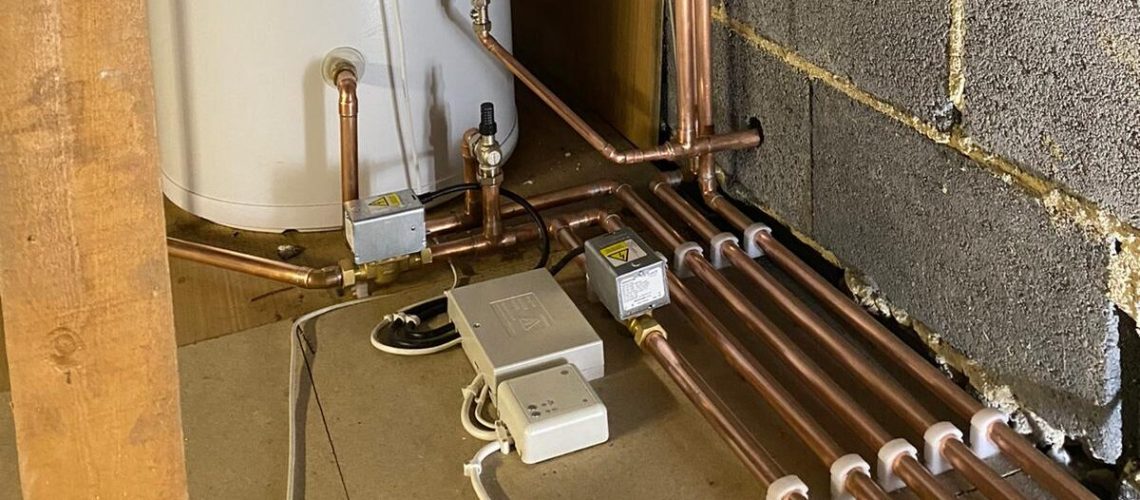In our recent case study, we installed a new unvented system in a loft space from the original position in an airing cupboard. Many of you will be familiar with an airing cupboard housing a hot water cylinder. These type of systems were very popular in the 20th Century before the quality of combination boilers improved significantly. The very first cylinders used gravity fed hot water to heat up the stored water. A brilliant invention at the time, but also very inefficient. The heat could seep through into the radiator circuits even in mid summer! So how did central heating change with the introduction of electric zone valves?
The cylinder and electric zone valves relationship
As mentioned, original cylinders used gravity hot water with no control zone valves bar the heat input. To gain more flexibility with hot water demand and improve efficiency, automatic valves became a necessity. So, how does it work?
Hot water cylinders have two parts: the chamber, where it stores cold water, and the coil which provides the heat input. (Note: the cylinder seals the two components from one another to prevent cross contamination of potable and central heating water). To produce hot water, the chamber requires heat from a source (in most cases a boiler or water heater) fed through the coil inside the cylinder. This coil heats the body of cold water fed from a large cold tank above, usually a loft space.
To control the temperature accurately, a thermostat fits to the body of the cylinder or coil inlet pipe. The thermostat receives power from either a timer or programmer. The thermostat controls the zone valve by sending power to the valve motor when the thermostat is calling for heat. When the thermostat is satified and no longer requires heat, it switches off the power to the zone valve.
The motorised valve has two parts to it. On top sits the electronics; a motor with a control circuit board, and in most cases, a spring mechanism to return the valve to the closed position. Underneath is the valve body which joins onto the pipework feeding the coil inlet. Inside the valve is a paddle that moves via the motor to open an close the valve ports. Once the valve motor is active, it opens the valve. The electric circuit will also send power to the pump and boiler once the valve has full opened. It holds the valve in the open position until the thermostat is satisfied. A spring returns the mechanism to the closed position.
For regulations on zone valves for hot water follow this link https://assets.publishing.service.gov.uk/government/uploads/system/uploads/attachment_data/file/504207/BR_PDF_AD_G_2015_with_2016_amendments.pdf

